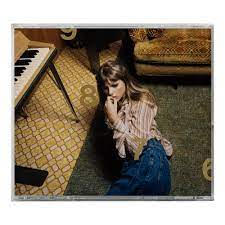In worlds where fairy godmothers enchant and flying carpets soar, an iconic group of animated heroines persevere through grand adventures.
For generations, young girls have grown up enamored with Disney princesses.
These classic characters have been gracing the big screen for over ninety years, but as society’s values have shifted, a debate rages. Are the women designated as princesses antiquated stereotypes of damsels in distress or are they empowering female role models?
Disney princesses are a group of royal or heroic ladies who play a special role in Disney films. Some of the “princesses” aren’t royalty, but they follow a specific set of criteria to still be added to the princess lineup.
According to Micaela Pérez Vitale and Samuel Cormier for Movieweb, an official Disney princess has to meet certain qualifications. The character has to be a recognizable lead in a Disney or Pixar movie and be introduced in the first of a series. She must be of royal blood or do something heroic, as well as be human-looking, if not human.
“Despite being so popular, princesses only represent a small percentage of Disney’s notable female characters,” Vitale and Cormier said.
They’re the leading ladies in stories encompassing love and perseverance, yet they are typically known as gentle, kind characters who will always end up with a “happily ever after.” A Disney princess commonly displays optimism and strength while pushing through challenges, showcasing her beauty and courage.
“My favorite Disney princess is probably Princess Jasmine because of her womanhood,” freshman Phoenix Cano said. “She’s a woman and she’s proud of that, and not scared to be who she is, and I love that for her.”
Senior Arpita Acharya idolized these leading ladies as a child.
“They represented what I perceived womanhood to be,” Acharya said. “I know for sure that in addition to the women role models in my life, young me looked up to them.”
The qualities that these characters embody are displayed to younger viewers. Many young girls admire these characters and see them as role models.
“[Belle] loved to read like I did, so I saw myself in her,” Acharya said. “Beyond that, her kindness and courage have always inspired me.”
Even so, the lack of diversity and women’s independence shown in the majority of the early stories doesn’t reflect modern values.
“I’m definitely not represented, as Tiana’s the only Black princess,” senior Harriet Ghapson said. “I just feel like there’s so much racial under-representation.”
Early princesses included Snow White, Cinderella, Aurora and Ariel who were lonely, young white girls dependent on a man to be saved, and by the end of the story, marry them. As a result, they were then elevated to true royal status.
“I think they’re a little dated, like, how can you relate to Aurora’s story?” Ghapson said. “If a guy kisses you when you’re asleep, let’s just label that as assault.”
With the oldest characters being from the mid 20th century, people question whether some princess should be eventually replaced. Senior Abby Elwood feels the storylines and values relating to these princesses haven’t held up to present day.
“I definitely do think they’re dated,” Elwood said. “When they come out with new movies, they are doing a better job of just having more diversity and inclusion, but yeah, I think a lot of the storylines put women in a stereotype.”
Starting with Jasmine in 1992’s “Aladdin,” women of color were added to the line up. Now, characters in stories, films and merchandise like Tiana, Mulan, Pocahontas, Moana, Raya and most recently entering the sisterhood, Asha from the new film “Wish”, present a more realistic representation of the little girls who love Disney princesses.
“I had a lot of Princess Jasmine toys, probably because I looked like her a lot when I was a kid,” Cano said.
Along with a more diverse line-up, Disney has scrapped the “damsel in distress” theme in the plots of their stories in favor of fighting gender roles, focusing less on men and more on being true to themselves.
“They’re definitely making them more empowering to women and having them do their own thing, being themselves,” Ghapson said.
Some women feel that the princesses should still have a love story and prioritize traditional femininity, while others believe that the newer independent princesses are a change for the better. Senior Ava Coyne believes that a balance of different styles and personalities are what’s best for the line.
“They don’t always have to be super feminine, like they have been,” Coyne said. “Some people are more tomboy, some people are really preppy, some are a mix in between. It just depends. Disney could really reflect that too.”
As the legacy of this group continues to be built, more adjustments may be made to the overall message it gives to its young audience.
“I think there’s room for growth, and I think [Disney’s] on a good trend right now,” Coyne said “They’re starting to get there.”

